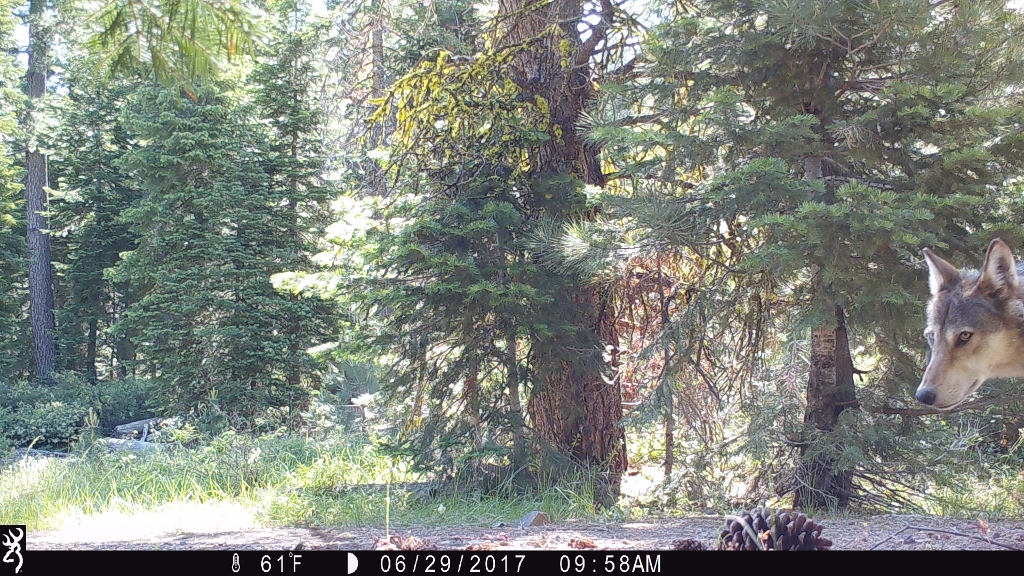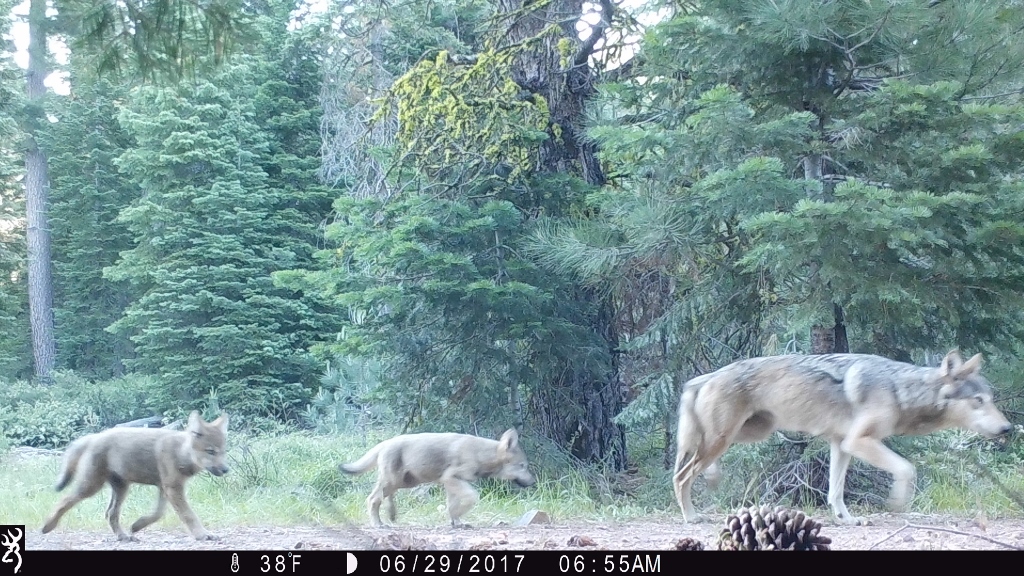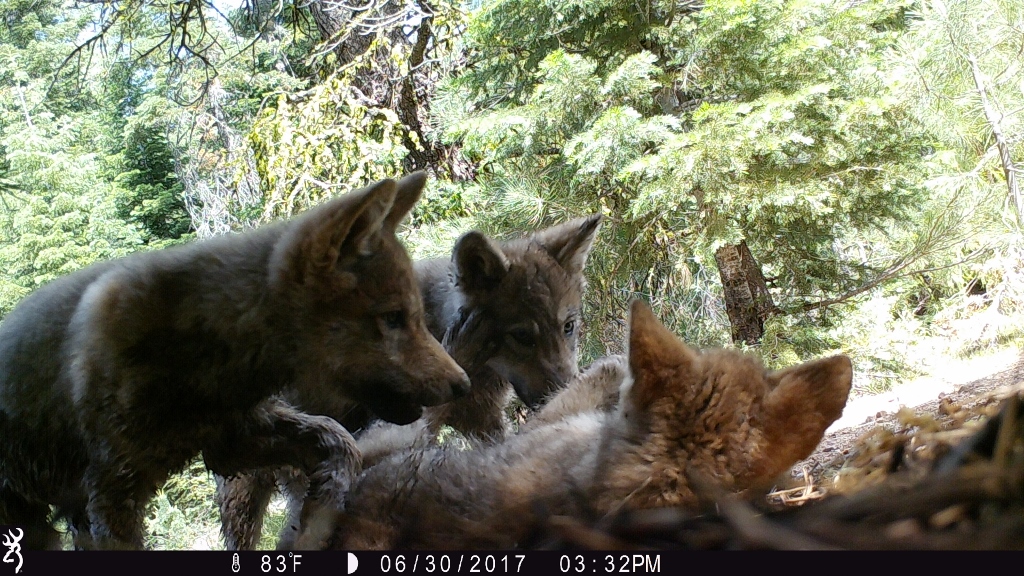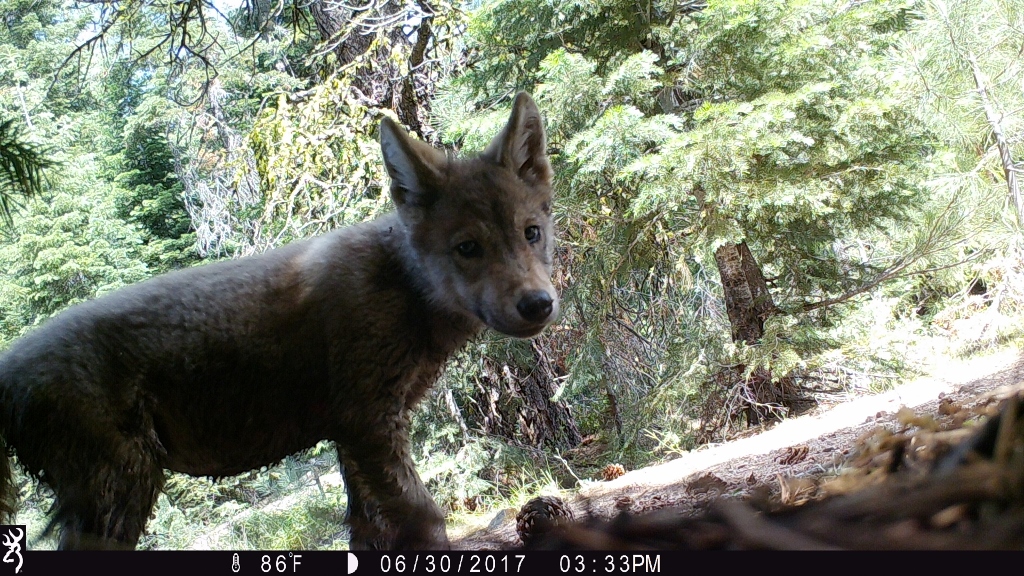Fish Report for 7-5-2017
CDFW Confirms Presence of Wolf Pack in Lassen County
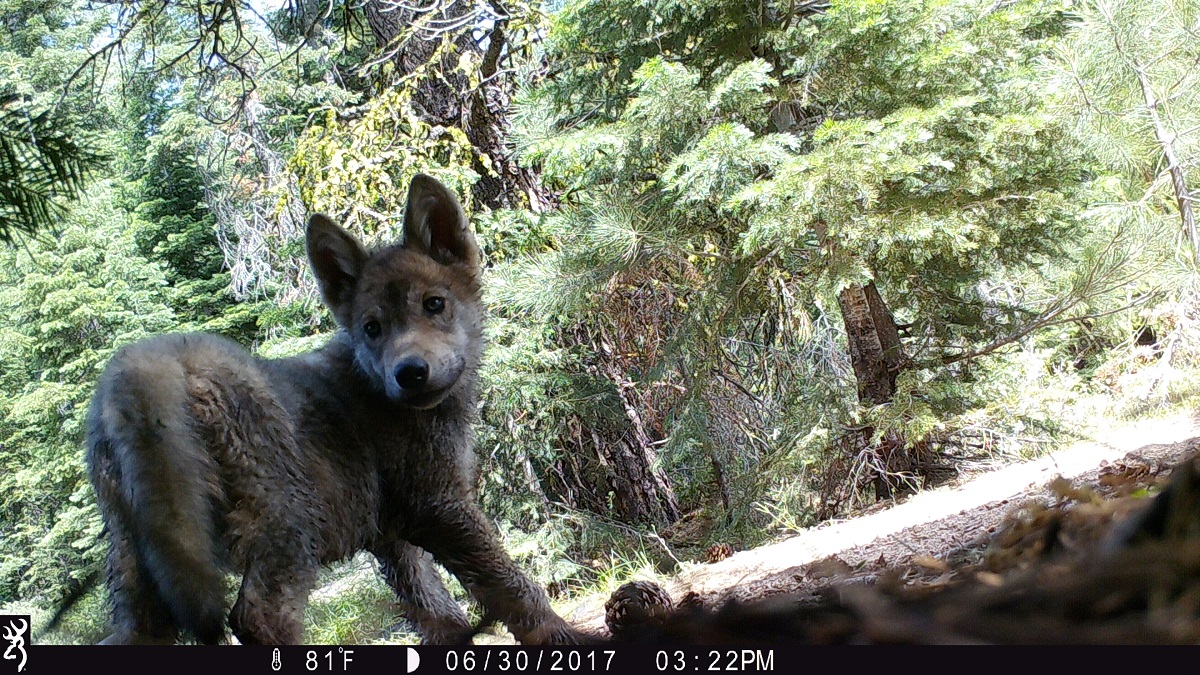
by CDFW
7-5-2017
Website
California Department of Fish and Wildlife (CDFW) biologists have captured and fitted a tracking collar to a female gray wolf in Lassen County, and confirmed that the wolf and her mate have produced at least three pups this year.
During summer and fall 2016, remote trail cameras captured images of two wolves traveling together in Lassen County. There was no evidence they had produced pups at that time. While the female’s origins remain unknown, genetic samples obtained from scat indicated the male wolf originated from Oregon’s Rogue Pack. The famous wolf OR7 is the Rogue Pack’s breeding male.
In early May 2017, partner biologists from the U.S. Forest Service (USFS) found evidence of recent wolf presence in the Lassen National Forest. CDFW biologists began surveying the area and planning a capture operation to collar one of the animals. On June 30, after 12 days of trapping attempts, the 75-pound adult female gray wolf was captured. After a thorough exam by the biologists and a wildlife veterinarian – including the collection of genetic and other biological samples – the wolf was collared and released.
“The anesthesia and collaring process went smoothly and the wolf was in excellent condition,” said CDFW’s Senior Wildlife Veterinarian Dr. Deana Clifford. “Furthermore, our physical examination indicated that she had given birth to pups this spring.”
The following day, July 1, CDFW biologists returned to the field for a routine follow-up check on the female. They encountered tracks of what appeared to be wolf pups, and then found that a nearby trail camera operated by USFS had captured photos of the female with three pups. The pups were gray in color and were serendipitously photographed playing in front of the camera.
These wolves, named the Lassen Pack by the USFS employee who first detected their location, are the second pack of gray wolves known in California since their extirpation in the 1920s. The first confirmed breeding pair in California produced five pups in eastern Siskiyou County in 2015, and are known as the Shasta Pack. The current status of the Shasta Pack is unknown, although one of the 2015 pups was detected in northwestern Nevada in November 2016.
The tracking collar affixed to the Lassen Pack female will collect data relative to her activity patterns, survival, reproduction and prey preferences. The Lassen Pack regularly traverses both public and private lands, including industrial timberlands, and the collar may also help to minimize wolf-livestock conflicts by providing information about the pack’s location relative to livestock and ranch lands. While most of the pack’s known activity to date has been in western Lassen County, some tracks have also been confirmed in Plumas County.
Gray wolves are currently both state and federally listed as endangered. Their management in California is guided by endangered species laws as well as CDFW’s Conservation Plan for Gray Wolves in California, finalized in 2016. CDFW’s goals for wolf management in California include conserving wolves and minimizing impacts to livestock producers and native ungulates.
The Conservation Plan, a wolf sighting report form, a guide to help distinguish a gray wolf from a coyote and additional information about wolves in California can be found at wildlife.ca.gov/Conservation/Mammals/Gray-Wolf.
Photos
More Reports
Florida Artist Wins 2017 California Duck Stamp Art Contest

7-4-2017
A painting by John Nelson Harris of Groveland, Fla., has been chosen as the winner of the 2017 California Duck...... Read More
Collecting Pre-Roasted Turkeys?
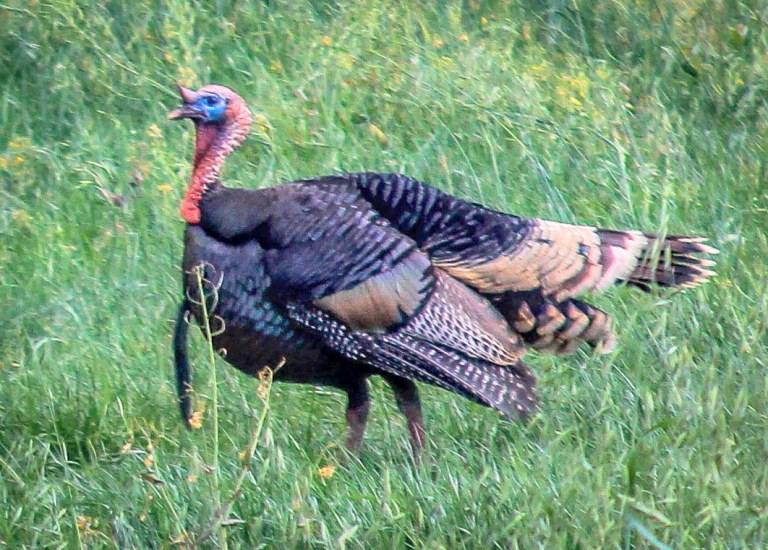
6-30-2017
Question: From your column, I’ve learned that roadkill is illegal to recover (so that I don’t hunt with my truck). Here’s...... Read More

Website Hosting and Design provided by TECK.net
